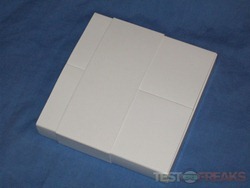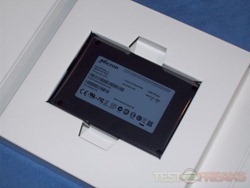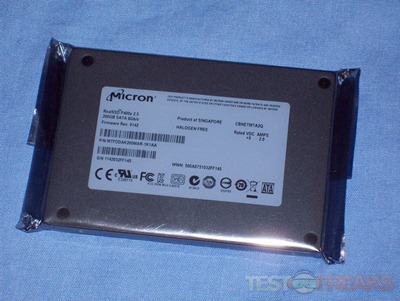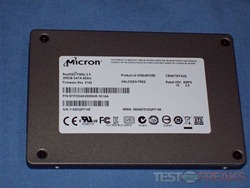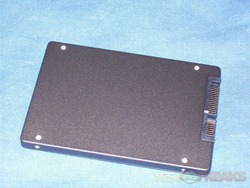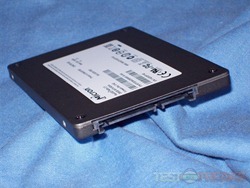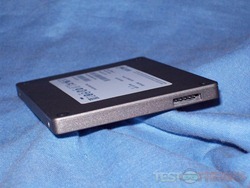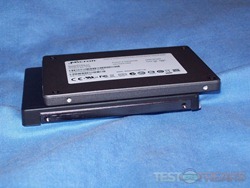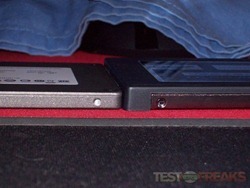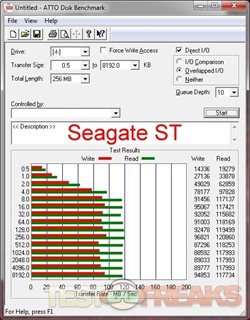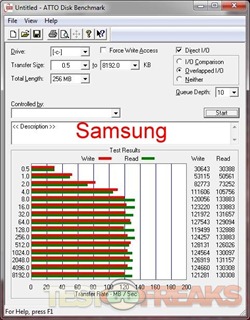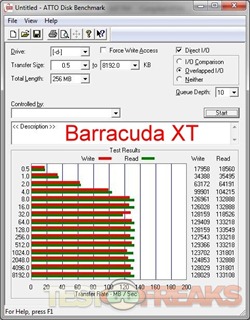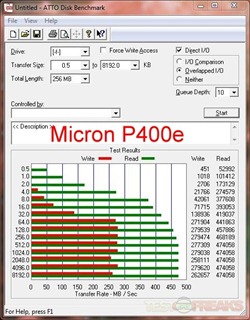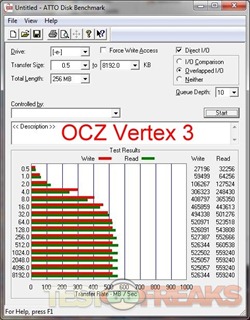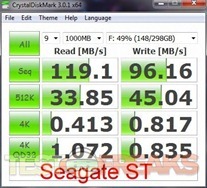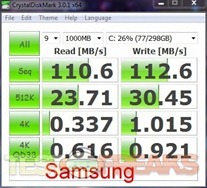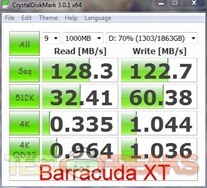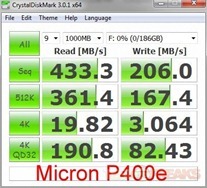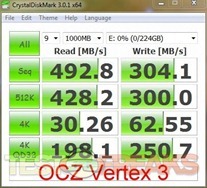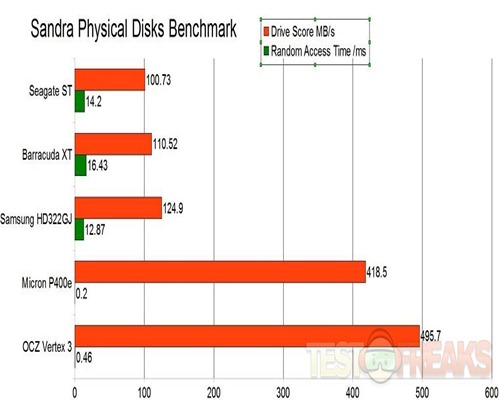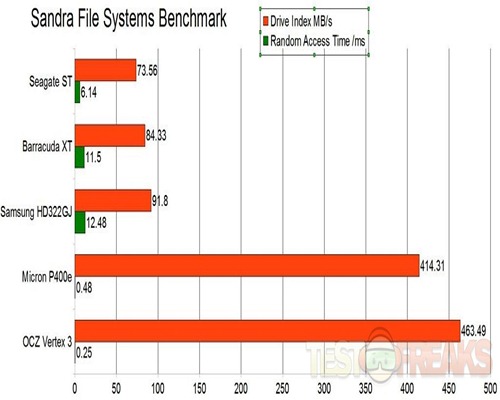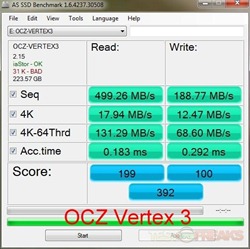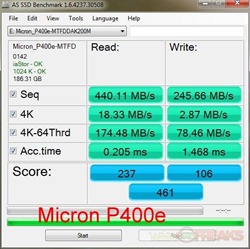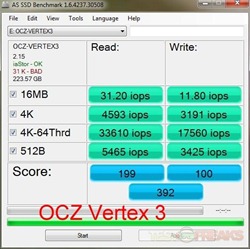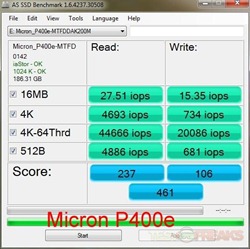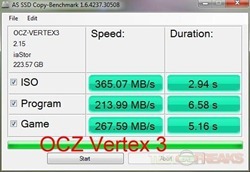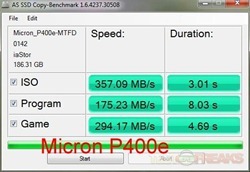Today for review I’ve got another SSD, this time it’s from Micron and it’s an entry level enterprise product. The drive is the RealSSD P400e and it has a capacity of 200gb. This drive is meant to have a low cost but yet perform well in enterprise situations, of course they can be used in home setup as well. It utilizes the SATA III interface for maximum speeds and it’s made to be durable and have a long life.
The drive arrived to me in just a plain white box, inside is the drive itself in an anti-static bag.
Here’s the drive itself, of course you have the SATA data and power connections.
Specifications:
Micron RealSSD P400e 200Gb SATA III 2.5″ SSD
P400e Enterprise SATA SSD
Enabled by our advanced 25nm MLC NAND Flash, P400e SSDs provide reliable high performance for read-intensive applications such as boot drives, direct-attached storage, and blade servers. They can also serve as a primary drive in applications that need more endurance and data reliability than a client drive can provide.
We specifically designed the P400e drive in response to customer requests for a drive with a low total cost of ownership (TCO) and key features like high lifetime endurance, enterprise-level data protection, and a wide selection of capacities. Its excellent dollars-per-IOP performance makes it a competitive replacement for enterprise HDD solutions.
Features:
Optimized for Low TCO
Our P400e drives provide outstanding IOPs-per-watt and dollars-per-IOP for enterprise solutions.
Excellent Read Performance
With read rates of up to 50,000 IOPs random and 350 MB/s sequential, P400e drives deliver focused enterprise performance.
Key Enterprise Features
Our P400e drives are equipped with a robust suite of enterprise features, including SMART attributes, hot-plug support, uCode, and enterprise data-path protection.
Start-to-Finish Quality
In addition to product advantages, we also offer unique NAND supplier advantages. Because we’re a NAND manufacturer with direct control over the memory design, process, and supply—you get the best that our product innovations, test and compatibility tools, and integrated support structure have to offer.
Why choose the P400e SSD?
Fast boot and application-loading times: Delivers superior performance over HDD and other entry-level SSDs.
Durability and endurance: SSD durability and reliability with enterprise-focused endurance specifications for long drive life.
Enterprise data path protection: Multiple error-correction checkpoints ensure that your data is protected throughout the data path.
Compatibility: Complies with SATA 6 Gb/s, making it an easy-to-adopt, drop-in HDD replacement, which increases design flexibility and speeds time-to-market.
Low power: Consumes significantly less power than a typical enterprise HDD and requires almost zero cooling.
NAND expertise: Leverages Micron’s proven quality and test capabilities to provide best-in-class drive reliability.
The P400e is slightly slimmer than the OCZ Vertex 3 that I just reviewed. It’s 7mm in height that’s specifically tailored for use in thin servers and other applications where space is an issue.
My system consists of an Intel Corei7 2600k CPU and an ASUS P8Z68-V Pro Gen3 motherboard which has Intel SATA6 ports on it.
The drives I’m using for comparison are the Seagate Barracuda XT 2tb SATA6, Samsung Spinpoint F4 HD322GJ 320gb SATA3, Seagate 7200.12 1tb SATA3 drive and the OCZ Vertex 3 SSD.
First up is Atto Disk Benchmark in order from slowest to fastest:
According to the specs, the RealSSD P400e is only supposed to hit about 350mb/s read speeds, but I hit well over 400mb/s, close to 500mb/s really. The specs state 140mb/s write and 350mb/s read, I got well above both as you can see. The drive is slow at read speeds, but it’s supposed to be.
The next test is Crystaldiskmark:
The 4k test shows the P400e to be quite a bit slower than the OCZ Vertex 3, but it’s an entry level drive and the Vertex 3 isn’t so it’s kind of expected.
I also ran benchmarks from SiSoft Sandra, the Physical Disks and the File Systems tests.
The first up is the Physical Disks test:
Benchmark hard disks (i.e. the disk itself, not the file system). As the test measures raw performance it is independent on the file system the disk uses and any volumes mounted off the disk.
Read Test: Sequential across disk
Write Test: Sequential across disk
Seek Test: random, full stroke
Drive Score: is a composite figure representing an overall performance rating based on the highest read or write speed across the whole disk. Thus the higher the better.
Access Time: is the average time to read a random sector on the disk, analogous to latency response time. Thus the lower the better.
Here’s the detailed results of the three fastest drives:
Samsung F4:
Drive Score : 124.9MB/s (82.72MB/s – 153.28MB/s) Results Interpretation : Higher scores are better.
Random Access Time : 12.87ms (4.64ms – 11ms) Results Interpretation : Lower scores are better.
Micron RealSSD P400e
Drive Score : 418.5MB/s (361.37MB/s – 432.83MB/s) Results Interpretation : Higher scores are better.
Random Access Time : 198µs (193µs – 190µs) Results Interpretation : Lower scores are better.
OCZ Vertex 3:
Drive Score : 495.7MB/s (490.4MB/s – 506.6MB/s) Results Interpretation : Higher scores are better.
Random Access Time : 46µs (81µs – 77µs) Results Interpretation : Lower scores are better.
The next test is the File Systems test:
Benchmark mounted file systems (i.e. volumes).
This is not the raw disk performance that other benchmarks test – but the speed of the volume itself that depends on many more factors like file system, operating system cache, position on disk, etc. Thus this is the performance you get at the file system level.
Read Test: Buffered, Random, Sequential
Write Test: Buffered, Random, Sequential
Seek Test
Drive Score: is a composite figure representing an overall performance rating based on the average of the read, write, and seek tests, and file and cache size. It is intended to represent drive performance under typical use in a PC. A larger number means better performance. The weighting of the results is not equal it represents the distribution of different files sizes as used on these devices (obtained through field research).
Then here’s the detailed results:
Samsung F4:
Detailed Benchmark Results
Buffered Read : 255MB/s
Sequential Read : 122MB/s
Random Read : 48.34MB/s
Buffered Write : 237.35MB/s
Sequential Write : 117.82MB/s
Random Write : 46MB/s
Random Access Time : 12.48ms
Micron RealSSD P400e:
Detailed Benchmark Results
Buffered Read : 448MB/s
Sequential Read : 455.15MB/s
Random Read : 445.32MB/s
Buffered Write : 272.61MB/s
Sequential Write : 265.39MB/s
Random Write : 268.61MB/s
Random Access Time : 48µs
OCZ Vertex 3:
Detailed Benchmark Results
Buffered Read : 524.73MB/s
Sequential Read : 510MB/s
Random Read : 503.72MB/s
Buffered Write : 292.68MB/s
Sequential Write : 287.89MB/s
Random Write : 286.63MB/s
Random Access Time : 25µs
The last test is using AS SSD benchmark:
In this test the Micron RealSSD seems a bit faster than the Vertex 3…
Here’s the IOPS scores:
Again same thing here, the RealSSD is a bit faster according to this test.
Here’s the AS SSD copy test:
It’s a toss up here with the RealSSD coming is better for the game test, but the Vertex 3 does better with ISO and Programs…
I also timed how long it takes to boot. I was using the Samsung F4 as my main drive, then the OCZ Vertex 3 and I used the RealSSD finally for comparison. I use a password for my computer so the time’s I recorded are from the time I push the power button to the login screen, and then put the password in as fast as I could, just a second or two, and then I let the computer finish booting which to me is an actual usable desktop with sidebar gadgets loaded.
Times to login screen:
Samsung: 52 seconds
Micron RealSSD: 37 seconds
Vertex 3: 38 seconds
Times to usable desktop:
Samsung: 2:19
Micron RealSSD: 1:13 seconds
Vertex 3: 58 seconds
The RealSSD takes a few seconds longer than the Vertex 3, but still it’s very fast when compared to a standard mechanical hard drive.
Conclusion:
The Micron RealSSD P400e obviously isn’t the fastest SSD when it comes to write speed, but it isn’t meant to be as it’s an enterprise drive made for environments where read speeds are crucial. The other difference between this and consumer level SSDs is the fact that the P400e provides data path protection which features memory path error correction as well. The P400e provides a great low cost solution for the enterprise sector which is where this drive is meant to be used. On the consumer side of things, this drive would make for a great boot, or main operating system drive. Using it you’ll find boot and read speeds drastically reduced. You could pair this with a fast, high capacity, mechanical drive and you’d have a system that would be able to handle most needs speedily.
Pros:
+Fast read speeds
+Thin profile
+Quick boot times with it
Cons:
-Slow write speeds
| Grades: | |
| Overall |  |
| Design |  |
| Performance |  |
To learn more about our review policy please visit this page HERE.

